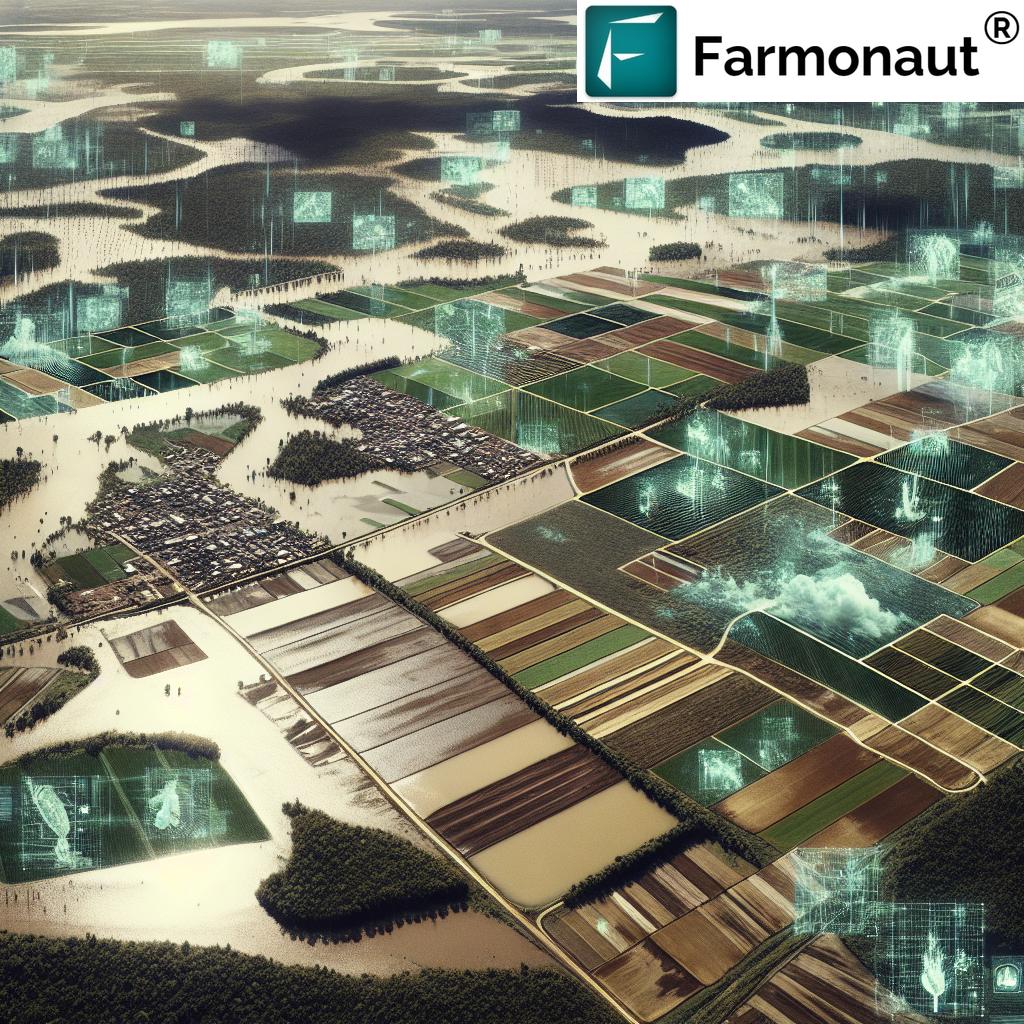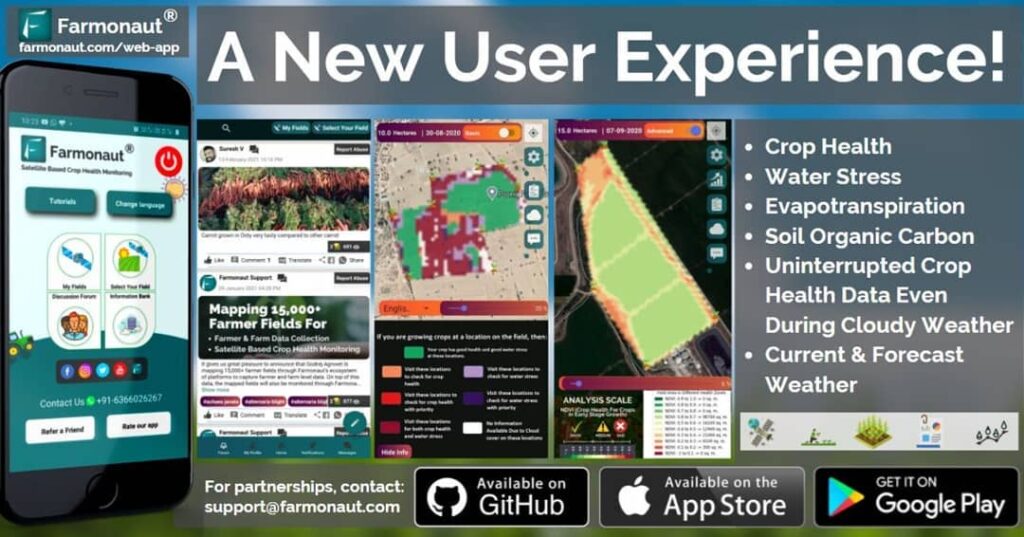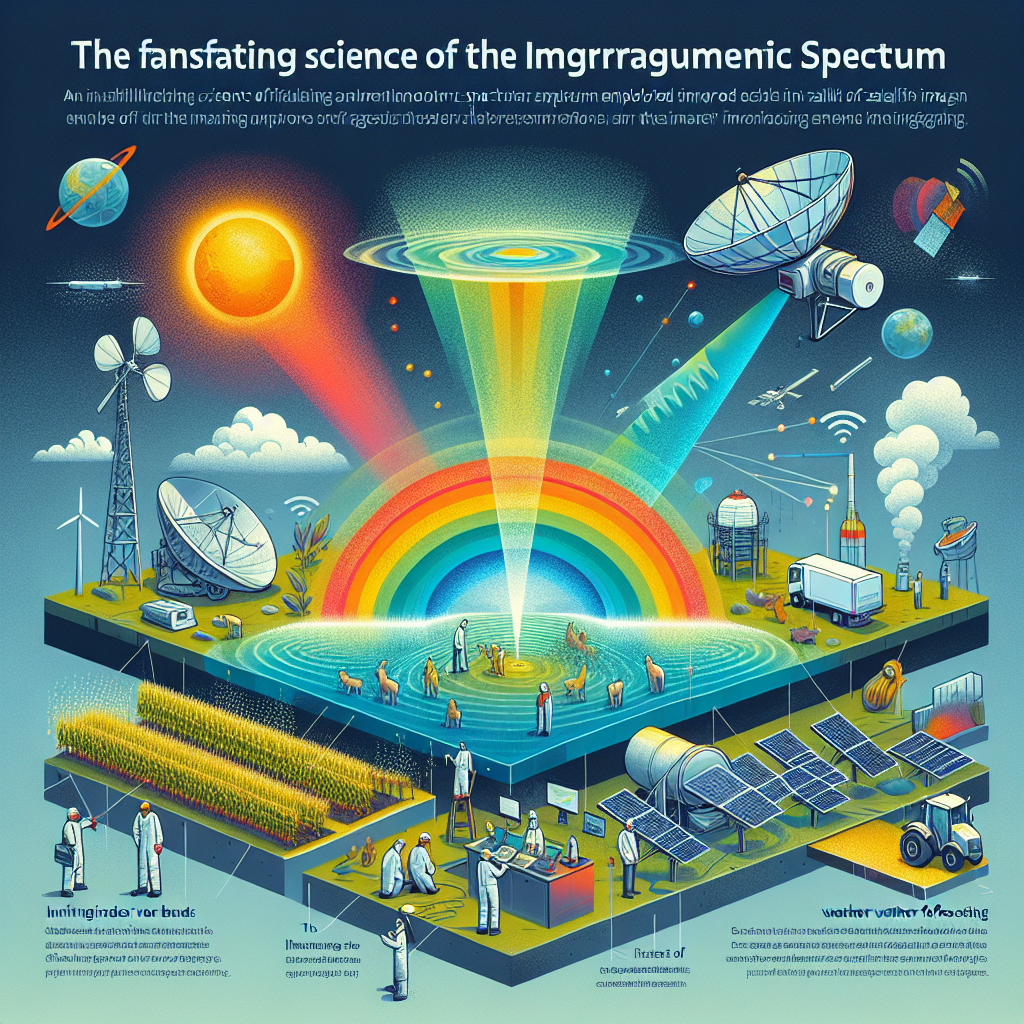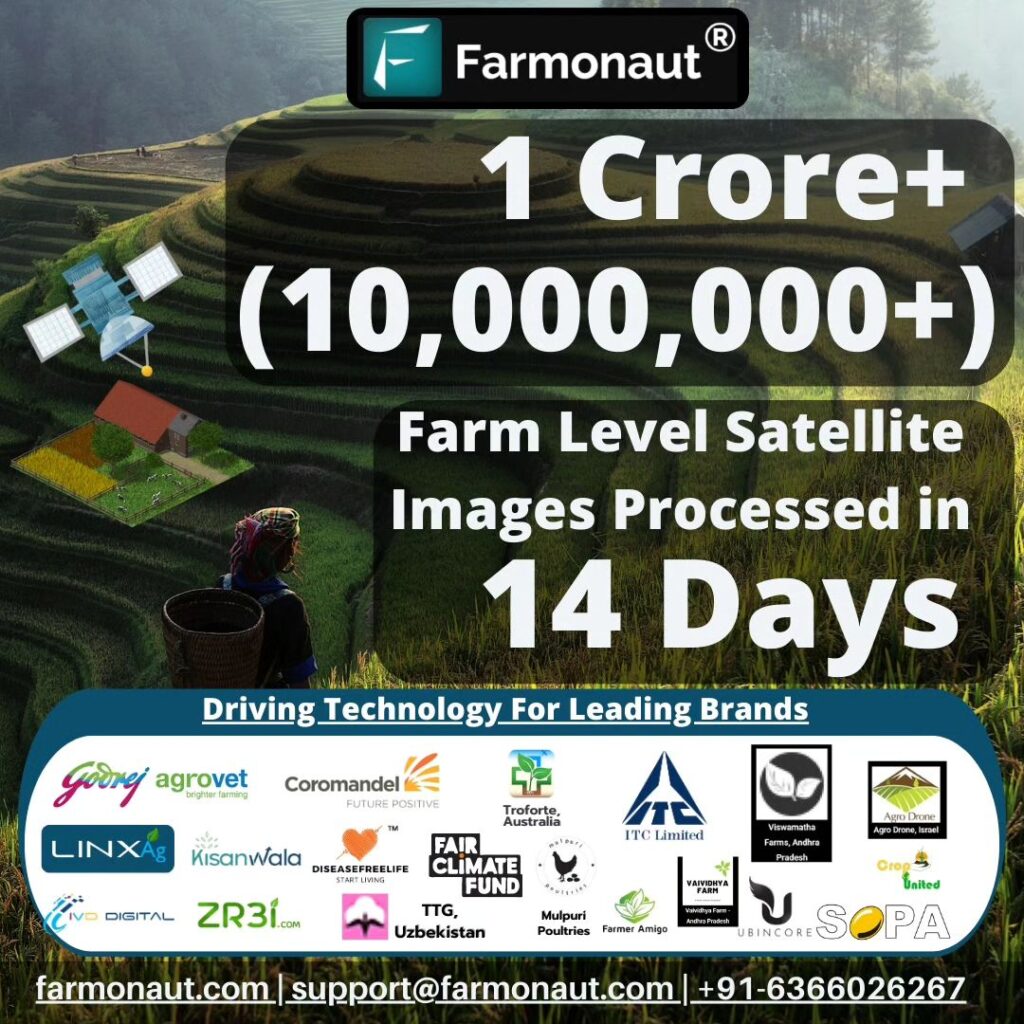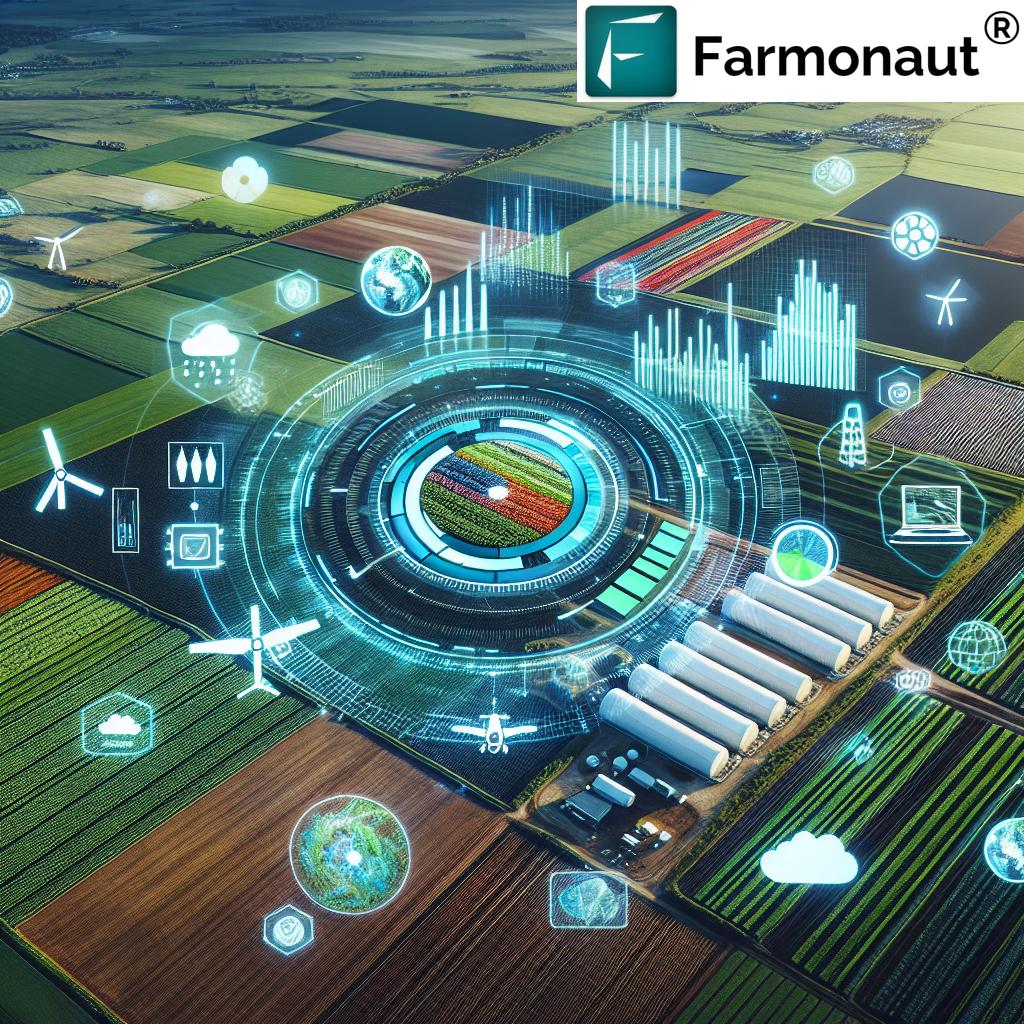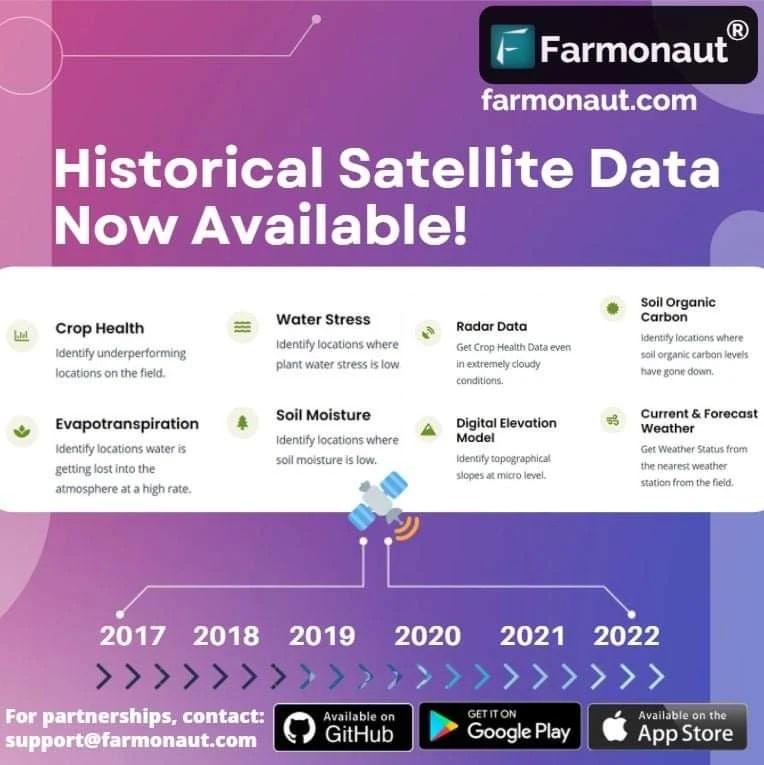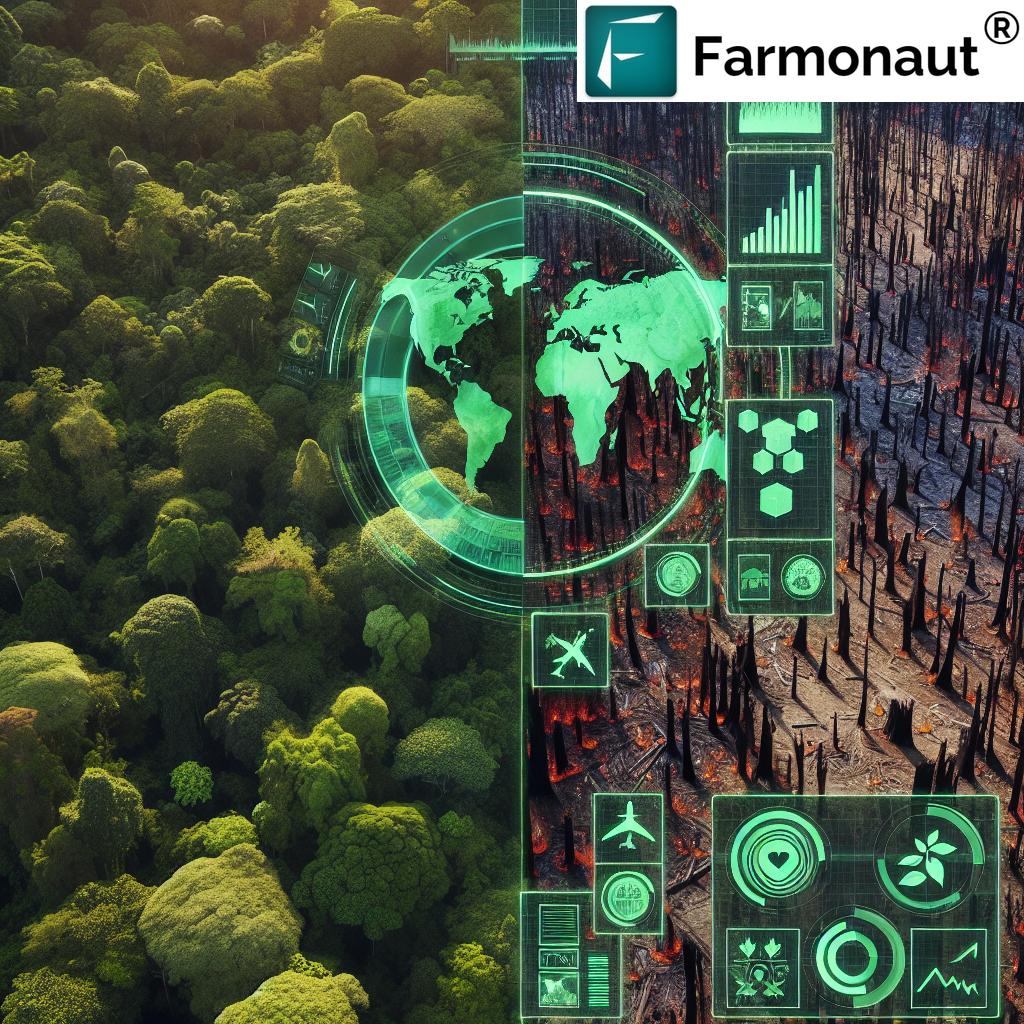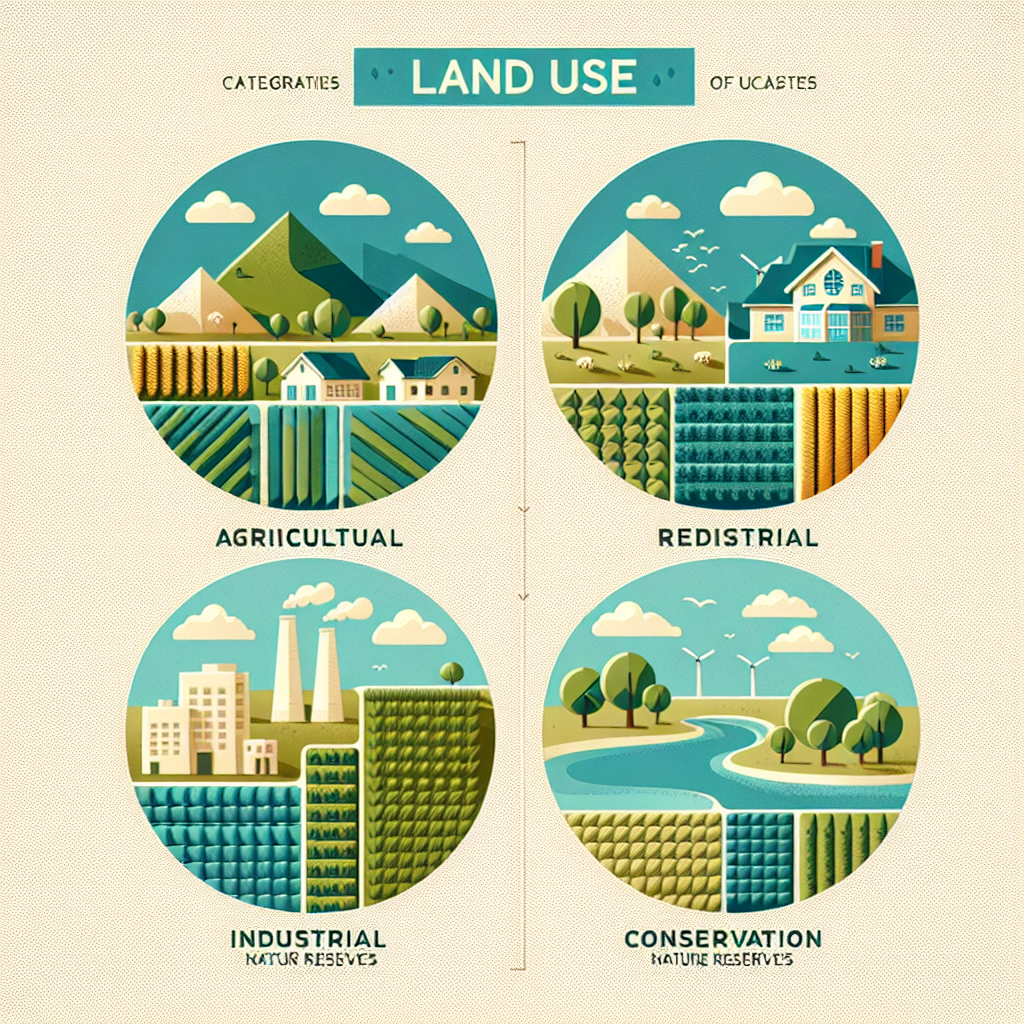15 Satellites in a Row: Chandrayaan 3 Birdseye Imagery Revolutionizing Agriculture in 2025
“15 satellites in sync can capture over 1 million square kilometers of farmland imagery in a single daily pass.”
Table of Contents
- Introduction: The Satellite Revolution in Agriculture
- Understanding 15 Satellites in a Row: Closer, Faster, Smarter Earth Observation
- How Birdseye Satellite Imagery Is Changing Precision Farming
- The Chandrayaan 3 Legacy: Birdseye Imagery for Agriculture and Beyond
- The Integration of AI & Advanced Technology in Satellite Farming Applications
- Satellite Comparison & Impact Table
- How We at Farmonaut Enable Satellite-Driven Agricultural Transformation
- Real-World Satellite Applications in 2025 and Beyond
- Sustainability, Climate Action, and Global Food Security with Satellite Imagery
- FAQ: 15 Satellites in a Row and Birdseye Satellite Imagery in Agriculture
Introduction: The Satellite Revolution in Agriculture
In 2025, the intersection of satellite technology, artificial intelligence, and advanced birdseye satellite imagery stands as one of the most transformative advancements in modern agriculture. New constellations, particularly those exemplified by 15 satellites in a row, offer a near real-time view of large swathes of farmland, revolutionizing how we monitor, manage, and predict crop and environmental conditions.
This comprehensive guide explores the core concepts and technologies reshaping the agricultural domain: How synchronized satellites and the birdseye perspective — with heritage from missions like Chandrayaan 3 satellite images — deliver actionable data for farmers, agronomists, and policymakers. We’ll uncover how advanced imaging, precision agriculture, and sustainable resource management are enabled by innovations in remote sensing, AI, and satellite payloads.
- What does it mean to have 15 satellites in a row?
- How do birdseye satellite imagery, multispectral data, and AI drive precision farming?
- Why do technologies inspired by Chandrayaan 3 now power high-resolution imaging for our planet’s agriculture?
- What new opportunities exist for farmers and environmental sustainability in this new era?
Let’s discover the potential and promise of these interconnected technologies, all actively shaping the future of food security, climate adaptation, and sustainable agriculture.
Understanding 15 Satellites in a Row: Closer, Faster, Smarter Earth Observation
The Concept: What Does “15 Satellites in a Row” Mean?
The concept of 15 satellites in a row refers to formations or arrays of satellites flying in close formation across orbital paths — each spaced optimally to maximize temporal and spatial monitoring of large swathes of the earth. Instead of a single standalone satellite that may revisit a given location only every few days, these tightly-coordinated satellites ensure continuous coverage.
Key features of these 15-satellite constellations:
- Near Real-Time Monitoring: As one satellite completes its pass, the next in the row begins, enabling continuous observation of vast fields and farmland areas.
- Unprecedented Resolution: Close passes allow for high spatial and temporal resolution imagery, often with revisit times measured in hours, not days.
- Multispectral & Hyperspectral Data: These arrays capture a wide range of spectral bands, which are essential for analyzing plant health, soil moisture, pest infestations, and detecting subtle stress factors affecting crops.
- Dynamic Interventions: The timely data and high frequency allows for rapid, dynamic interventions on fields, empowering farmers and agronomists to make high-impact decisions.
This deployment of satellite formations marks a new era within the agricultural domain: it enables precision agriculture, enhances productivity, and improves sustainability by transforming the speed, resolution, and coverage of birdseye satellite imagery.
The Technical Edge: Temporal and Spatial Resolution Like Never Before
Typical remote sensing satellites provide cloud-free images of any site on Earth only every 3–16 days. In contrast, arrays of satellites in a row can reduce revisit time to as little as 30 minutes, or even continuous observation by overlapping coverage. This is critical for monitoring fast-changing agricultural conditions, such as sudden pest outbreaks, irrigation issues, or nutrient deficiencies that otherwise go undetected.
- Spatial Resolution: With high-precision sensors (sometimes down to 30–50 centimeters, inspired by Chandrayaan 3-like imaging), even minor field anomalies or early stress signals in plant health are visible.
- Temporal Resolution: The formation can relay near-real-time information multiple times a day, which is paramount for timely action in crop management.
How Birdseye Satellite Imagery Is Changing Precision Farming
Birdseye satellite imagery provides a top-down, high-definition perspective of agricultural fields. This imagery, characterized by clarity and granularity, forms the backbone of modern precision farming practices.
The Birdseye Advantage: Seeing Fields in Unprecedented Detail
With birdseye imaging from satellite constellations, farmers can now:
- Map crop patterns and identify underperforming sections within large fields.
- Detect variations in chlorophyll for early identification of nutrient deficiencies.
- Assess soil moisture heterogeneity, enabling targeted irrigation that conserves water.
- Monitor pest and disease outbreaks before they visually manifest.
- Analyze environmental stress and factors such as drought, flooding, or soil erosion in near real-time.
This level of detail and mapping coverage was impossible just a few years ago. Now, the integration of birdseye satellite imagery in agriculture is increasingly central to boosting yields, sustainability, and global food security.
Examples of Birdseye Imagery Applications
-
Chlorophyll Mapping
Due to their hyperspectral capabilities, satellite arrays detect fine differences in leaf reflectance, enabling immediate response to micronutrient deficiencies or drought. -
Moisture & Resource Management
High-spatial-resolution birdseye imagery supports irrigation planning, leading to reduced water consumption & lower carbon footprints. -
Pest Infestation Prediction
Continual satellite monitoring picks up evolving plant stress signatures that often precede mass pest infestations. Data-driven action stops issues before they escalate.
For farmers, traders, and agri supply chains, Farmonaut’s blockchain-based traceability solution ensures transparent, secure tracking of produce from field to store. Enhanced traceability builds trust with consumers, reduces fraud, and enables access to high-value markets.
The Chandrayaan 3 Legacy: Birdseye Imagery for Agriculture and Beyond
From Lunar Missions to Advanced Satellite Imaging
The heroics of Chandrayaan 3 — a lunar exploration mission — have a profound, albeit often indirect, impact on earth observation technologies. The high-precision imaging instruments developed and refined for lunar mapping (e.g., Chandrayaan 3 satellite images of the moon’s surface at exceptionally sharp resolutions) now inspire payloads in terrestrial satellites.
“Chandrayaan 3’s birdseye tech enables satellite-based precision farming insights at a resolution as fine as 30 centimeters.”
These advancements trickle down into earth observation arrays, supporting agricultural applications where fine detail matters. High-definition satellite imaging enables:
- Mapping of tiny field-level anomalies and pest patches.
- Detection of stress factors — such as saline intrusions, waterlogging, or hypoxic soil bands.
- Tracking crop stages and yields by distinguishing the subtle shifts in canopy structure, color, and texture.
Distinct features from Chandrayaan-inspired payloads now produce high-resolution images of Earth’s surface, empowering precision agriculture and enabling satellite-driven insights that are previously impossible.
The Trickledown: Imaging Technology for Crop Monitoring
- Spectral Innovation: Hyper-accurate instruments initially built for lunar applications now support multispectral imaging from satellites monitoring Earth’s farmlands.
- Detail and Coverage: 15 satellite arrays equipped with Chandrayaan-inspired optical payloads cover thousands of square kilometers per day while pinpointing micron-level changes in crop and soil health.
Chandrayaan 3’s innovation has indirectly ushered in a new era of high-frequency, high-detail satellite imagery — optimizing everything from crop yield prediction to sustainable farm management.
The Integration of AI & Advanced Technology in Satellite Farming Applications
Why Advanced Data Analytics Matter in 2025
It’s not just about collecting high-resolution imagery or deploying 15 satellites in a row. The real power arrives when we fuse AI, machine learning, and on-demand data processing with this wealth of information. Artificial intelligence unlocks interpretations, predictions, and actionable recommendations that drive the next leap in precision agriculture.
- Crop Yield Forecasting: Algorithms trained on satellite imagery and ground truth data can forecast yields at both field and regional scales, improving planning and food supply management.
- Pest & Disease Outbreak Prediction: AI models analyze spectral anomalies and microclimate trends to warn farmers about impending outbreaks — allowing for timely interventions before visible damage occurs.
- Site-Specific Fertilizer Application: Variable rate fertilizer recommendations tailored to exact field zones reduce overuse of agrochemicals, cutting costs and environmental impacts.
Seamless Integration: Data, Devices, and Decision Support
In 2025 and beyond, satellite technologies no longer work in silos. The Farmonaut API and developer documentation demonstrate how businesses and agri-tech developers can integrate real-time satellite and weather data, crop analytics, soil health mapping, and AI advisories directly into their platforms or applications.
This integration supports everything from
- Automated crop loan and insurance verification
- Fleet and resource management (including farm machinery and logistics)
- Satellite-based verification for agricultural loans and insurance
- Blockchain-based product traceability
- National-level food security monitoring
- Carbon footprinting for climate-smart agriculture (Learn more)
all driven by satellite-derived, AI-enhanced birdseye interpretation of the agricultural domain.
Satellite Comparison & Impact Table: How 15 Satellites in a Row Are Revolutionizing Agriculture
| Satellite Name/ID | Launch Year | Sensor Resolution (m) | Coverage Area (sq km/day) | Data Delivery Frequency | Estimated Data Latency (hours) | Types of Agricultural Insights Provided | Notable Precision Farming Applications Enabled |
|---|---|---|---|---|---|---|---|
| AGRO-01 | 2023 | 0.50 | 75,000 | Every 2 h | 1 | Crop monitoring, soil moisture, yield estimation | Scouting, VRA fertilizer |
| AGRO-02 | 2023 | 0.50 | 70,000 | Every 2 h | 1 | Pest detection, disease risk mapping | Integrated pest management |
| AGRO-03 | 2024 | 0.40 | 73,000 | Every 2 h | 1 | Drought stress, chlorophyll indices | Irrigation optimization |
| AGRO-04 | 2024 | 0.30 | 68,000 | Every 2 h | 1 | Soil/plant disease diagnostics | Early disease intervention |
| AGRO-05 | 2024 | 0.50 | 74,000 | Every 2 h | 1 | Multispectral crop health | Field zone management |
| AGRO-06 | 2025 | 0.50 | 80,000 | Hourly | 0.5 | Yield, NDVI, environmental stress | Custom advisories, compliance |
| AGRO-07 | 2025 | 0.30 | 72,000 | Hourly | 0.5 | Soil moisture, salinity detection | Irrigation and drainage planning |
| AGRO-08 | 2025 | 0.40 | 78,000 | Hourly | 0.5 | Deforestation, soil erosion | Conservation planning |
| AGRO-09 | 2025 | 0.40 | 76,000 | Hourly | 0.5 | Crop phenology tracking | Harvest logistics |
| AGRO-10 | 2025 | 0.30 | 75,000 | Hourly | 1 | Plant stress monitoring | Early warning alerts |
| AGRO-11 | 2025 | 0.35 | 77,000 | Hourly | 1 | Fertilizer optimization | Reduce agrochemical use |
| AGRO-12 | 2025 | 0.50 | 82,000 | Hourly | 1 | Crop vigor, heat stress | Climate adaptation |
| AGRO-13 | 2025 | 0.40 | 81,000 | Hourly | 1 | Regional food security monitoring | Drought & disaster response |
| AGRO-14 | 2025 | 0.35 | 79,000 | Hourly | 1 | AI-driven site-specific advisories | Decision support systems |
| AGRO-15 | 2025 | 0.30 | 85,000 | Hourly | 0.5 | Yield forecasting, climate resilience | Precision sustainability management |
How We at Farmonaut Enable Satellite-Driven Agricultural Transformation
At Farmonaut, we make satellite-driven insights affordable and accessible for farmers, agricultural businesses, governments, and industry professionals around the globe. By harnessing the power of advanced satellite constellations, AI-driven advisories, and blockchain-based traceability, we deliver critical, actionable data — revolutionizing how agriculture is managed in the era of 15 satellites in a row and birdseye satellite imagery.
-
Real-Time Monitoring via Satellites
Our platform delivers multispectral agricultural insights (e.g., crop health NDVI, soil condition indices), enabling timely decisions that boost yield productivity and resource sustainability. -
Jeevn AI Advisory System
An AI-based real-time recommendation engine analyzes satellite data for weather, crop growth stage, and intervention advice — reducing guesswork for farmers and improving outcomes. -
Blockchain Traceability & Fleet Management
With our traceability tools and fleet/resource management platform, users enhance supply chain trust and optimize agri-logistics — supporting both food security and operational efficiency.
Our commitment is to democratize technology-driven farming, making powerful features like satellite-based crop health monitoring, AI advice, and real-time environmental impact tracking accessible, scalable, and affordable for users — whether smallholders or global enterprises.
Our Large Scale Farm Management platform uses satellite-driven monitoring to remotely track field health, detect underperformance, and coordinate resources across hundreds of parcels — all through web or mobile dashboards.
Real-World Satellite Applications in 2025 and Beyond
Crop Health, Yield Optimization, and Pest Early-Warning
With 15 satellites in a row and advanced birdseye satellite imagery playing a central role in precision agriculture in 2025:
- Crop Monitoring: Near real-time imagery gives up-to-date health maps that help farmers identify underperforming sections, monitor anomalies, and implement quick interventions.
- Yield Prediction: AI models use continuous, high-resolution data to forecast expected yields, helping agronomists and food processors optimize supply and distribution.
- Pest/Disease Outbreaks: Early detection of stress or patchy reflectance patterns in multispectral/hyperspectral satellite imagery signals pest onset before visual symptoms.
Soil Moisture, Irrigation, and Precision Resource Management
- Soil Moisture Monitoring: Precise surface and root zone moisture levels allow farmers to reduce overwatering, improve drought resilience, and cut resource costs.
- Precision Irrigation: Data-driven irrigation schedules minimize waste and protect against climate change stressors.
Sustainability Monitoring and Carbon Footprinting
- Environmental Stress Tracking: Detect drought, heat, flooding, or chemical drift through the birdseye lens of satellite arrays.
- Deforestation & Forest Health: Continuous monitoring supports forest biodiversity protection, reducing agricultural encroachment and lowering carbon footprints.
Policy, Food Security, and Disaster Intervention
- Food Security Monitoring: Governments and organizations access aggregated, birdseye satellite data to identify supply risks, safeguard against shortages, and direct humanitarian efforts.
- Disaster and Drought Response: Quick identification of drought-stricken or flood-damaged areas from satellites speeds up relief planning.
Sustainability, Climate Action, and Global Food Security with Satellite Imagery
As climate variability intensifies, threatening crop yields and food supply chains worldwide, the role of 15 satellites in a row and birdseye satellite imagery becomes ever more critical.
- Managing Resource Scarcity: Efficient, data-driven decisions on water, fertilizer, and crop planning reduce waste and preserve natural resources.
- Climate Change Adaptation: Near real-time environmental assessments using high-resolution satellite imagery help adapt strategies for shifting weather patterns and support sustainable intensification.
- Biodiversity and Ecosystem Balance: Coordinated satellite monitoring enables best practices in forest conservation and agricultural zoning.
- Food Security: Robust, aggregated satellite data supply empowers policymakers to maintain stable food supplies and resilience in the face of environmental uncertainty.
In 2025 and beyond, the convergence of satellite arrays, lunar-inspired imaging technologies, AI, and sustainability science is redefining what’s possible in agriculture — driving productivity, food security, and true environmental stewardship.
FAQ: 15 Satellites in a Row, Chandrayaan 3 Satellite Images & Birdseye Satellite Imagery In Agriculture
This phrase refers to constellations of 15 satellites flying in close formation — allowing continual, near real-time imaging and data collection over vast areas. In agriculture, this means unprecedented monitoring frequency and precision for crop fields, resource management, and yield prediction.
Though Chandrayaan 3 was a lunar mission, the high-precision imaging instruments developed for it have inspired new terrestrial satellite payloads. Their sharp resolution and spectral innovations are adopted by next-generation earth observation systems, especially in agricultural monitoring.
Birdseye imagery provides a detailed, top-down perspective of farmland. It allows for mapping productivity zones, detecting underperforming areas, assessing soil and crop health, and developing targeted interventions before problems escalate.
Benefits include earlier detection of pests/diseases, precision irrigation, efficient fertilizer use, improved yields, food security monitoring, and lower environmental impact—driven by actionable, real-time remote sensing insights.
You can access birdseye satellite imagery, crop health analytics, and AI-driven recommendations using the Farmonaut web or mobile app, or by integrating data into your systems via the Farmonaut API.
Yes, using blockchain-based traceability ensures data transparency and product authentication through the entire value chain, increasing trust and market access for agricultural products.
Conclusion: Ushering in the Future of Agriculture with Satellite Constellations & Birdseye Insights
From 15 satellites in a row to birdseye satellite imagery inspired by Chandrayaan 3, the combined force of advanced data, imaging technology, and intelligent analytics is rewriting the rules of agricultural management, sustainability, and food security as we enter 2025 and beyond.
Stakeholders — from farmers and businesses to governments — can now access high-frequency, high-resolution satellite data and actionable insights, enabling timely interventions, reducing environmental impact, and supporting global food systems. As satellite and AI technology evolve, their role in maximizing productivity and sustainability while adapting to climate change will only grow stronger.
At Farmonaut, we are proud to stand at the forefront of this change, delivering democratized, technology-driven solutions for real-time crop health, agricultural resource optimization, traceability, and environmental stewardship for a better future — field by field, nation by nation.




